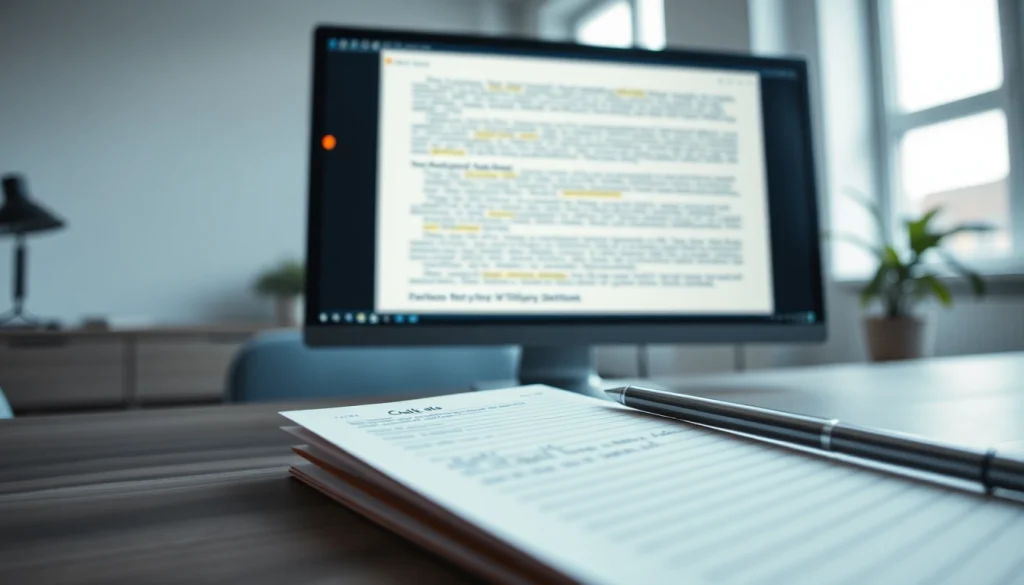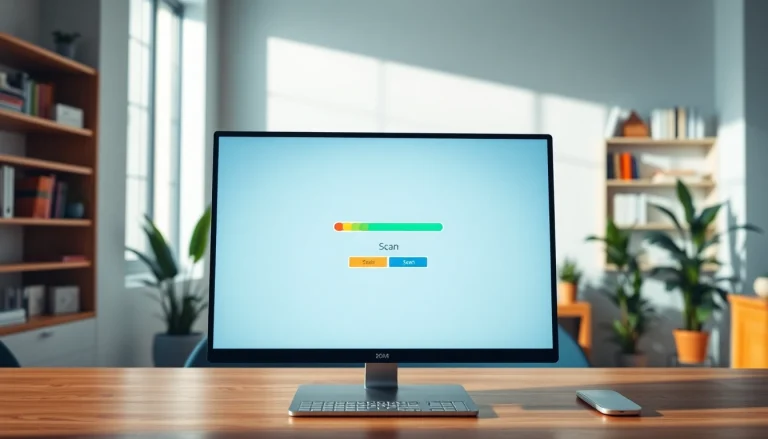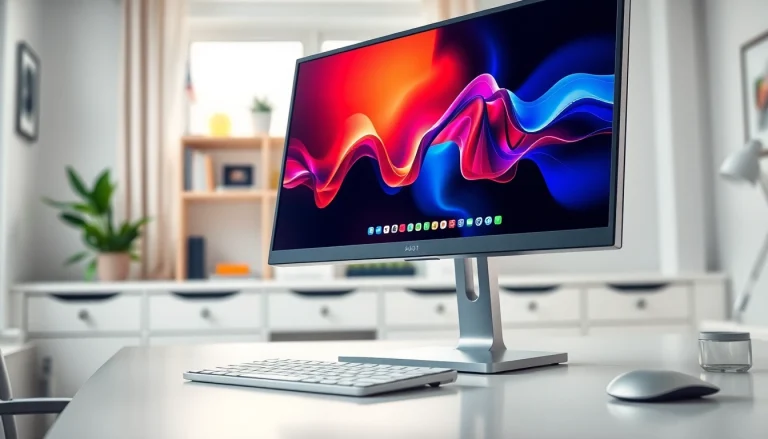
Understanding Plagiarism Detectors
What is a Plagiarism Detector?
A plagiarism detector is a digital tool created to identify instances of plagiarism within texts. Whether for academic, professional, or personal writing, these tools serve countless purposes. From students submitting essays to companies crafting reports, plagiarism detectors help ensure that the work is original. The fundamental objective of a plagiarism detector is to compare the submitted text against a vast database of existing written content to identify similarities, highlighting sections that might require sources or citations. Considering the increasing importance of original work in academia and business, employing a plagiarism detector is essential for anyone looking to maintain integrity in their writing.
Types of Plagiarism Detectors
Plagiarism detectors vary widely in functionality, features, and purpose. Here’s an in-depth look at the primary types:
- Web-based Plagiarism Checkers: These include services like Grammarly and Turnitin, which scan the internet for matches against billions of pages.
- Software Applications: Tools like Copyscape require downloading software to use, suitable for offline checks and often feature batch processing capabilities.
- Institutional Solutions: Tools often adopted by schools and universities, such as Turnitin, focus on academic integrity and are integrated into learning management systems.
- AI-powered Tools: Emerging technologies use artificial intelligence to detect nuanced forms of plagiarism, providing deeper insights than traditional methods.
How Plagiarism Detectors Work
Understanding how plagiarism detectors function can help users make the most of these tools:
Modern plagiarism detectors employ sophisticated algorithms to analyze text. Upon submission, these systems dissect the written material into segments. They then compare these segments to entries in their extensive databases, which range from internet articles to scholarly journals. Once a match is detected, these tools often provide a similarity report, outlining where similarities occur and suggesting appropriate citations for borrowed ideas.
Some tools also measure similarity percentages, allowing users to determine the extent of potential plagiarism in relation to the total text length. This feature has gained prominence for its clarity in evaluating original contributions versus unoriginal content.
Benefits of Using a Plagiarism Detector
Ensuring Academic Integrity
For students and educators, the stakes regarding academic integrity are incredibly high. Plagiarism detectors serve as a vital line of defense against unintentional and intentional plagiarism. By utilizing these tools, students can better understand what constitutes plagiarism and its repercussions. Reports generated by these detectors provide a clear picture of text originality, making it easier for educators to uphold academic standards without resorting to punitive measures.
Improving Originality in Writing
Regular use of a plagiarism detector encourages writers to develop their voice and style. As users consistently check their work, they become more aware of their writing habits and are encouraged to create original content actively. This practice not only enhances personal writing skills but fosters creativity and innovation, essential traits in a competitive job market.
Saving Time and Effort
Time is a precious resource for writers of all types. By incorporating a plagiarism detector into the writing process, individuals reduce the likelihood of having to rewrite entire sections of their work to address plagiarism issues post-factum. This proactive approach to plagiarism not only saves time but also minimizes the stress associated with last-minute edits or revisions.
Choosing the Right Plagiarism Detector
Factors to Consider
Selecting an appropriate plagiarism detector hinges on several key factors:
- Database Size: A larger database improves the likelihood of detecting plagiarism accurately. Consider tools that access extensive content pools.
- Ease of Use: The interface should be user-friendly, with straightforward instructions and minimal learning curve.
- Citation and Reporting Features: Look for options that help generate citations and provide comprehensive reports with clear feedback on how to improve originality.
- Customer Support: Reliable customer support can prove essential, particularly for paid services that you rely on regularly.
Comparing Popular Tools
When it comes to selecting a plagiarism detector, comparing popular tools can provide insight into their capabilities. Here are a few options worth considering:
- Grammarly: Besides offering grammar checking, it includes a robust plagiarism checker that taps into billions of online sources.
- Turnitin: Predominantly used in educational settings, this tool focuses on providing in-depth reports and extensive source matching.
- PapersOwl: This free service offers accurate plagiarism detection, particularly aimed at students needing quick checks.
- Copyleaks: Known for its AI-driven capabilities, this tool is especially adept at detecting even subtly modified text.
Free vs Paid Options
Deciding between free and paid plagiarism detectors requires weighing several considerations:
Free tools often provide decent basic services, ideal for casual users. However, they typically have limitations regarding database size, features, and support. Paid options, while incurring costs, tend to yield higher accuracy, offer comprehensive reports, and enable multiple checks without restrictions. Evaluate your needs carefully to determine the right balance.
Common Misconceptions about Plagiarism Detection
Do Plagiarism Detectors Always Catch All Issues?
One common misconception is that plagiarism detectors catch every instance of copied content. The truth is not that straightforward. These tools work by comparing text to their databases; hence, if a document draws from non-indexed sources or proprietary databases, it may not detect these similarities. It’s crucial for users to understand that a clean plagiarism report does not grant complete assurance of originality.
Are All Detectors Equally Accurate?
Another misconception is the assumption that all plagiarism detection tools function the same way and with the same accuracy. In reality, performance can vary widely based on the database size, algorithms used, and additional features offered. Researching and testing several detectors is the best approach to finding one that meets your specific requirements.
Understanding False Positives
Some users abandon plagiarism detection tools due to confusion around false positives. A false positive occurs when a plagiarism detector identifies a section of text as plagiarized even if it’s original. This often happens with common phrases or widely used terminology. Users should critically analyze reports before modifying their text and understand that some matches may not indicate plagiarism.
Best Practices for Using Plagiarism Detectors
Integrating Detectors into Your Writing Routine
Incorporating a plagiarism detector into your writing routine can enhance your workflow significantly. Begin by using the tool early in the writing process. This proactive approach can identify potential sources of unintentional plagiarism while the content is still being developed, allowing for adjustments before completion.
Tips for Interpreting Plagiarism Reports
Interpreting the output of plagiarism detection tools requires diligence. Familiarize yourself with the language and format of the reports your chosen tool produces. Check the percentages of similarity, examine the flagged sections, and practice verifying the sources highlighted. This diligence will enable you to understand accurately if an actual citation is necessary.
Next Steps After a Plagiarism Check
After running a plagiarism check, it’s essential to consider the next steps for your document. If the report indicates high similarity or flagged sections, revisit those parts. Research the highlighted sources and ensure that proper citations are included. If circumstances allow, rephrase the disputed sections to maintain originality. Ultimately, the goal is to create a piece that reflects your unique perspective and writing style.






